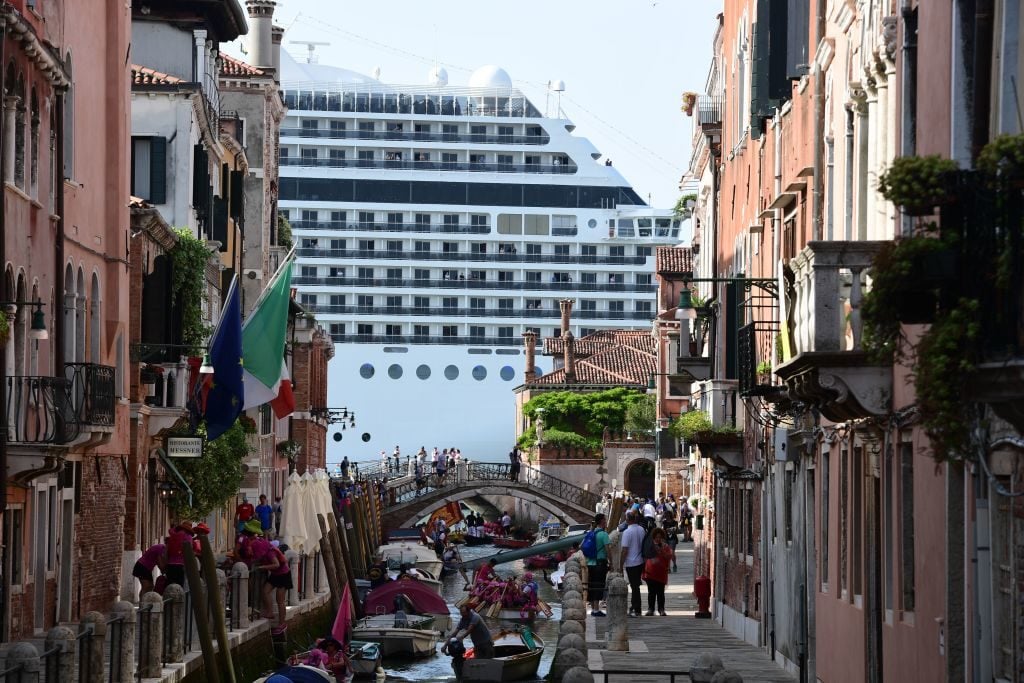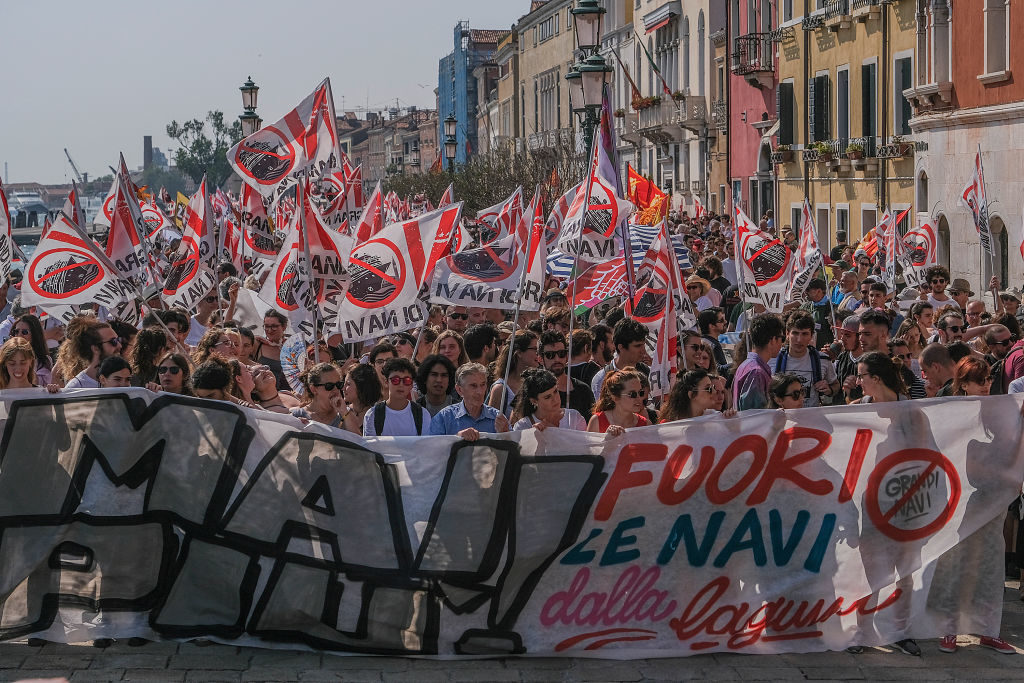Art World
After Damaging Collisions (and Too Many Near Misses), Venice Decides to Ban Giant Cruise Ships Once and For All
The Italian government has decided to begin diverting the giant ships away from Venice's central waterway.

The Italian government has decided to begin diverting the giant ships away from Venice's central waterway.

Kate Brown

Italian authorities have decided to begin diverting cruise ships away from Venice’s central waterway, the Giudecca canal. The historic move follows a series of collisions and years of protest against the giant vessels’ environmental impact on the famous lagoon city.
On Wednesday, officials from the Italian government said that cruise ships would be gradually diverted away from the city center and its ecologically sensitive lagoon. Danilo Toninelli, the Italian minister for transport, explained that the decision was “to avoid witnessing more invasions of the Giudecca by these floating palaces, with the scandals and risks that they bring,” according to the Financial Times.
Growing calls for a solution to the increasing volume of traffic peaked this summer when five passengers were injured after the cruise ship MSC Opera struck a local tourist boat. The collision in the Giudecca canal in June saw the ship giant hitting a crowded jetty. Not long after, another ship nearly hit a restaurant during a storm.
The mayor of Venice, Luigi Brugnaro, said that a major tragedy was narrowly avoided in the MSC Opera incident. He had already announced earlier this year the introduction of a €3 tourist tax aimed at day-trippers, many of whom arrive by ship. The tax will come into effect as of December 31, a spokesperson for the local government told artnet News.

Protest in Venice, Italy, following the incident of MSC Opera. Photo: Stefano Mazzola/Awakening/Getty Images.
For decades, Venice has been been debating the economic costs and benefits of cruise ships in particular and mass tourism in general. Venice attracts 25 to 30 million foreign visitors per year, according to the Italian tourist bureau. Less than a third of them spend a night there. The local population is only 50,000 citizens.
Earlier this week, Venice called on other busy cruise ports in Europe, including Barcelona, Amsterdam, and Dubrovnik, among others, to help find ways of curbing the problem large ships pose to local communities in historic port cities.
“The growing size of the vessels, their environmental impact on the areas around our ports, and the pressure exerted by the increasing number of tourists, are creating a conflict situation,” explained Pino Musolino, the head of the Venetian port, according to Brussels Times. Musolino made the international request, and it has been reported that several ports have responded positively.
The newest initiative to begin reducing the number of massive liners sailing through the central canal is due to begin next month. Some cruise ships will be docked at two terminals away from the center of the city. The Fusina and Lombardia terminals are still inside the lagoon, however. The Italian transport minister says that, by next year, a third of cruise ships will be rerouted and that, in the longer term, new berths outside the lagoon will be found at Chioggia, at the opening of the lagoon, or Lido San Nicolo, a ferry terminal on the Adriatic side of Lido Island.
Mayor Brugnaro has other ideas, and favors the port of Marghera, where oil tankers dock, which is inside the lagoon.
Jane Da Mosto, who is a scientist and founder of the conservation group We Are Here Venice, told the Financial Times that the diversion of the liners is not enough to make a real difference, arguing that it would just create the same problems in a different part of interconnected and relatively small waters.